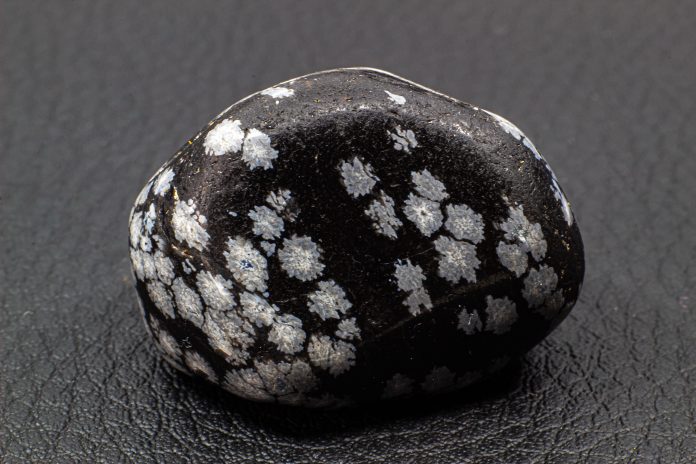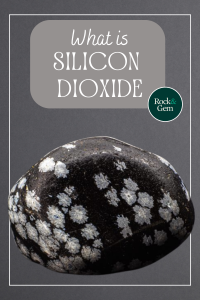
What is silicon dioxide? It’s a term often used interchangeably with quartz. While much of the vast amount of silicon dioxide within the Earth’s crust is quartz, not all of it falls into that category.
Early mineralogists once believed the different quartz varieties were separate minerals. But by 1800, they had learned that all consisted of silica, a name derived from the Latin silicis, meaning “flint.” Silica was considered an element until 1824 when Swedish chemist Jöns Jakob Berzelius demonstrated that it is actually a mineral consisting of the element oxygen and a new element that he named “silicon.”

What is Silicon Dioxide? Discovering Quartz Polymorphs
By then, researchers had a good handle on quartz, agreeing that it crystallizes in the hexagonal system, has a Mohs hardness of 7.0 and a specific gravity of 2.65, and consists solely of silicon dioxide. But much more research would be needed to reveal the surprising fact that not all silicon dioxide is quartz.
Mineralogists discovered the first quartz polymorph (a mineral with an identical chemistry but a different crystal structure) in 1868 in volcanic rocks in Mexico. Named “tridymite” after the Greek word tridymos, or “triplet,” and alluding to the “trilling” form of its crystals, it is softer and less dense than quartz. Tridymite crystallizes in both the monoclinic and triclinic systems.
In 1887, mineralogists discovered the tetragonal polymorph cristobalite, named after its type locality at Mexico’s Cerro San Cristóbal. Physically similar to tridymite, cristobalite is familiar as the white “snowflakes” in snowflake obsidian that form from the devitrification of obsidian.
The monoclinic silicon-dioxide polymorph coesite was synthesized in 1953, then discovered in nature in 1960 at northern Arizona’s Barringer Meteor Crater. Much harder (Mohs 7.5) and slightly denser than quartz, coesite crystallizes in the extreme temperatures and pressures of the Earth’s mantle and in meteoric impacts.
Stishovite Details
Stishovite, a tetragonal polymorph, was synthesized in 1961 and then found later at the Barringer Crater. It is softer than quartz and twice as dense. Well-developed crystals of stishovite and other impact-origin silicon dioxide polymorphs are rare because their split-second creation allows little time for crystal development.
In 2004, seifertite turned up as tiny orthorhombic crystals in a basaltic Martian meteorite. The hardest and densest of all silicon-dioxide polymorphs, seifertite forms when the heat of atmospheric entry alters the tridymite and cristobalite that is sometimes present in Martian and lunar meteors.
Researchers synthesized the tetragonal polymorph keatite in the 1950s, then discovered natural crystals in 2013 as tiny inclusions in diopside (calcium magnesium silicate) at Kazakhstan’s Kokchetav Massif. Formal recognition of keatite as a mineral species is pending.
While all silicon dioxide polymorphs share the formula SiO2, their physical properties differ significantly from those of quartz and each other. Most form when extreme temperatures and pressures force silicon and oxygen into lattice arrangements other than the hexagonal configuration of quartz. All are metastable at ambient temperatures and pressures and eventually transform into quartz.
Fusing Quartz Sand
What is silicon dioxide? Two other forms of silicon dioxide are not true polymorphs. Lechatelierite, an amorphous silicon dioxide, was found at the Barringer Meteor Crater in 1915. Softer and less dense than quartz, it forms when the heat and pressure of meteoric impacts and lightning fuse quartz sand. With its noncrystalline structure, lechatelierite is not a mineral, but a mineraloid. It occurs in lighting-strike-formed “Libyan desert glass” and in “trinitite,” a glass created when heat from the 1945 nuclear detonation at New Mexico’s Trinity Site altered quartz sand.
In 1984, mogánite, a partially hydrated silicon dioxide and thus not a true polymorph, was discovered on Spain’s Canary Islands. Softer and less dense than quartz, it crystallizes in the monoclinic system. Mogánite forms from the devitrification of amorphous opaline silica.
In the future, mineralogists expect to identify additional polymorphs and related forms of silicon dioxide to further demonstrate that, while all quartz is indeed silicon dioxide, all silicon dioxide is not quartz.
This article about what is silicon dioxide previously appeared in Rock & Gem magazine. Click here to subscribe. Story by Steve Voynick.












